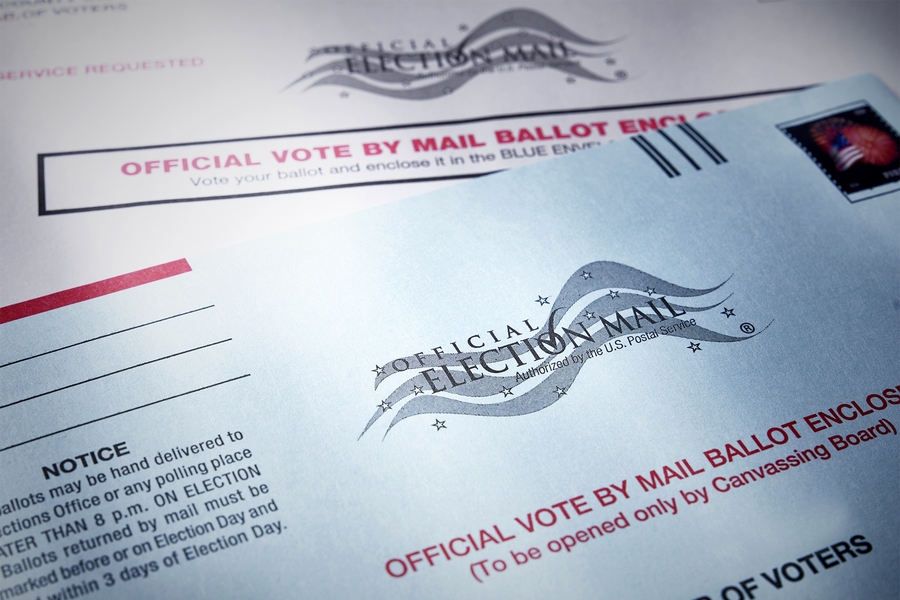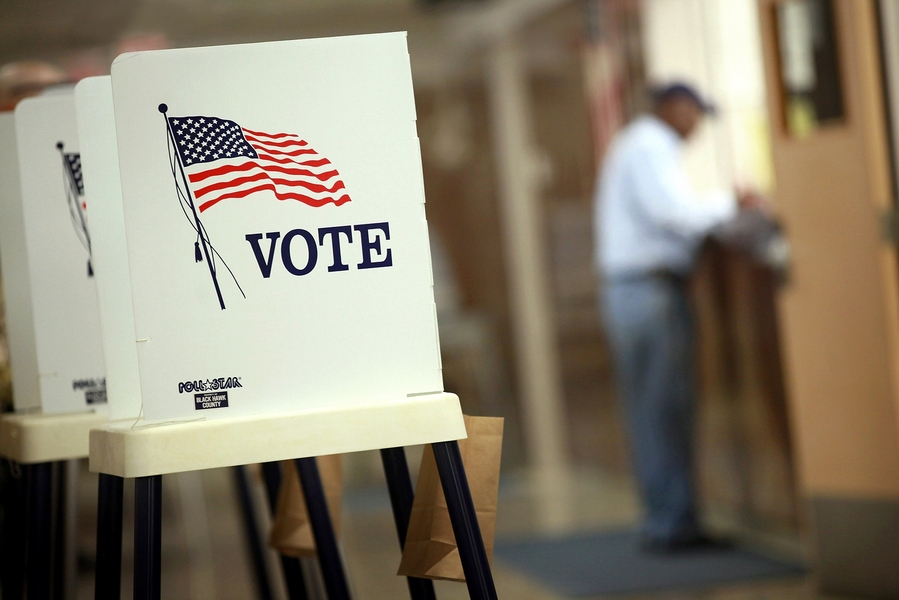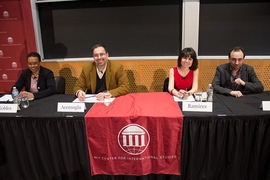American voters are facing the unprecedented prospect of electing a new president amid a global pandemic. Already, the Covid-19 crisis has led some states to cancel in-person voting in favor of voting by mail, while other states have delayed primaries or held them with physical distancing guidelines that have forced voters to wait in long lines beyond the physical confines of their polling places. The Democratic National Convention, at which the Democratic Party will formally select its challenger and running mate to face incumbent President Donald Trump, has been delayed a month and is now scheduled for late August — though it may end up taking place online.
Charles Stewart III is the Kenan Sahin Distinguished Professor of Political Science at MIT and the founder of the MIT Election Data and Science Lab. SHASS Communications spoke with him recently about the broader impacts of the pandemic on the U.S. elections, in particular the decisions that need to be made, quickly, to increase the extent of voting-by-mail and other safe voting methods for the general election in November.
Q: Given the need for social distancing and the uncertain timeline of the pandemic, what are the greatest risks you see to the forthcoming presidential election? What steps can be taken now to ensure that a fair and representative election takes place in November?
A: The most obvious risk is that fear of infection, indeed, fear of death, will reduce turnout in the November election. The consequences of reduced turnout would be catastrophic for American democracy. Not only would it deny a voice to millions of Americans, it would throw the legitimacy of the outcome into question.
There are other risks to be navigated that are related to the turnout issue, but are also distinct conceptually. The first of these is logistical chaos. Because of the Covid-19 crisis, it is clear that more voting needs to be done by mail than has ever been done in the U.S. This is a view that I entirely support.
Yet this is easier said than done. In 2016, only 20 percent of voters cast their ballot by mail. The recent growth in vote-by-mail has been concentrated among a small number of western states, so that in the east, the percentage is much lower — around 10 percent. If we are to get the percentage of voters overall voting by mail to the 50-60 percent level, this will require states, like Massachusetts, that have previously only had 5 percent mail-vote rates to ramp it up to 50 percent.
That’s a big lift. As I point out in my recent LawFare blog post, voting by mail at a large scale requires serious attention to a number of processes and logistical challenges. The states that currently cast all their votes by mail — Colorado, Oregon, and Washington — have taken decades to get where they are. Can the rest of the states get even halfway to where these three other states are in the confines of six months? If they can’t — if the mail ballots end up going to the wrong places, or they end up being rejected in large numbers because of signature-matching problems — then the post-election period will put Florida 2000 to shame. That’s the worst-case scenario. I’m more optimistic than to believe this will be where we end up. But that’s the risk we face.
The second risk is lack of legitimacy because of how the election ends up being run. This points us in two directions. On the one hand, states could inadequately implement expanded vote-by-mail programs. This will lead to contentious lawsuits and voters believing that their votes didn’t count, and that the winner was chosen through an arbitrary process. On the other hand, the further states push voting by mail, the further residents who distrust mail voting — mainly because of the fraud opportunities — the more people will doubt the legitimacy of the outcome because they believe the election was stolen because so many mail ballots were just flowing around, willy-nilly.
For reasons I don’t entirely understand, voting by mail has been associated with the Democratic Party. Thus, if the Democrat wins in 2020, a lot of Republicans will believe that happened because Democrats were able to steal the election through the expansion of mail balloting.
So, what can be done? First, despite the risks, mail balloting should be expanded. If decisions are made now to take that road, almost all states can spend the next six months getting the logistical ducks in a row to make this happen successfully. And, speaking practically, the seven states that are the most closely divided politically — the battleground states — seem well-positioned to prepare for an onslaught of mail ballots. Yet, as mentioned in the LawFare blog post, expanding mail balloting will be a big lift for most states. As I said, you can’t just flip a switch.
Second, states should spend time planning how to make in-person voting safe. For a variety of reasons, I’m predicting that millions of voters will still vote in person. Obviously, with personal distancing and concerns about transmitting the virus, it’s going to be harder to vote in the confined spaces that are most polling places. Still, there are many reasons why people will prefer — or need — to vote in person. Thus, state and local election officials will need to collaborate with public health professionals to create protocol that will make in-person voting as safe as possible — at least as safe as grocery shopping.
Finally, we will need to be patient, especially when it comes to finding out who won the November election. With the increase in mail voting and the likely shortage of personnel to count the ballots, voting counting will be delayed. Election officials need to plan for this, and create ways for the delayed vote-count still to be transparent. Still, it’s going to be delayed, and we need to be prepared for that.
Q: The current pandemic is putting extraordinary stress on our political system, leading in some cases to an expansion of executive power. What developments concern you, and what can Americans do to safeguard our democracy — our democratic traditions, norms, institutions, voting rights, and electoral infrastructure — in this time of crisis?
A: Be attentive, and figure out what is important. I’ve been encountering this question in a very specific formulation: Will the November 2020 election be delayed? The answer is, “no.” There is no statutory or constitutional authority to do that. Even if the asteroids are raining on our heads and the zombies are roaming the streets on November 3, we will be voting. To make this happen will require public officials and the public to prioritize democracy.
So, the first thing we can do is all agree that voting on November 3 is a non-negotiable, and then to think backwards about how we ensure that. The second thing we can do is to support the efforts to make that happen. I am worried that people — including some governors — will wake up on November 3 and say, “it’s too unsafe to vote today.” To prevent that question from even arising, we all need to be committed to creating a voting environment that makes this scenario highly unlikely to happen.
Q: What political protections exist that will help the American system of democracy weather the Covid-19 outbreak? Are there political activities currently underway that give you hope?
A: The thing that gives me hope is that I’m totally unable to answer my email, read all the Slack channel messages I receive, and attend all the Zoom meetings I’m invited to. Election officials at the grassroots level are working at a high level to respond to the crisis and ensure that voting will be safe and secure in November.
Sometimes, their political superiors are not as supportive of necessary measures as the election officials themselves, so Americans should be communicating with their state elected officials — governors and state legislators — to advocate for the measures necessary to meet this crisis. This doesn’t mean that people need to advocate for permanent change to voting practices.
This is an emergency. Policies that in regular circumstances would be controversial shouldn’t be in this moment. The receptiveness of election officials to try new things in this environment is heartening. They need the political support that comes from the public rallying around them.



!["In my view," says MIT Professor Elizabeth Wood, "the core motivation behind [election] interference is Russia's two-fold belief a) that the most important goal of the Russian state is world power status and b) that such status cannot be achieved without recourse to espionage and manipulation."](/sites/default/files/styles/news_article__archive/public/images/201910/MIT-SHASS-elizabeth-wood.jpg?itok=bm2PpSCC)







